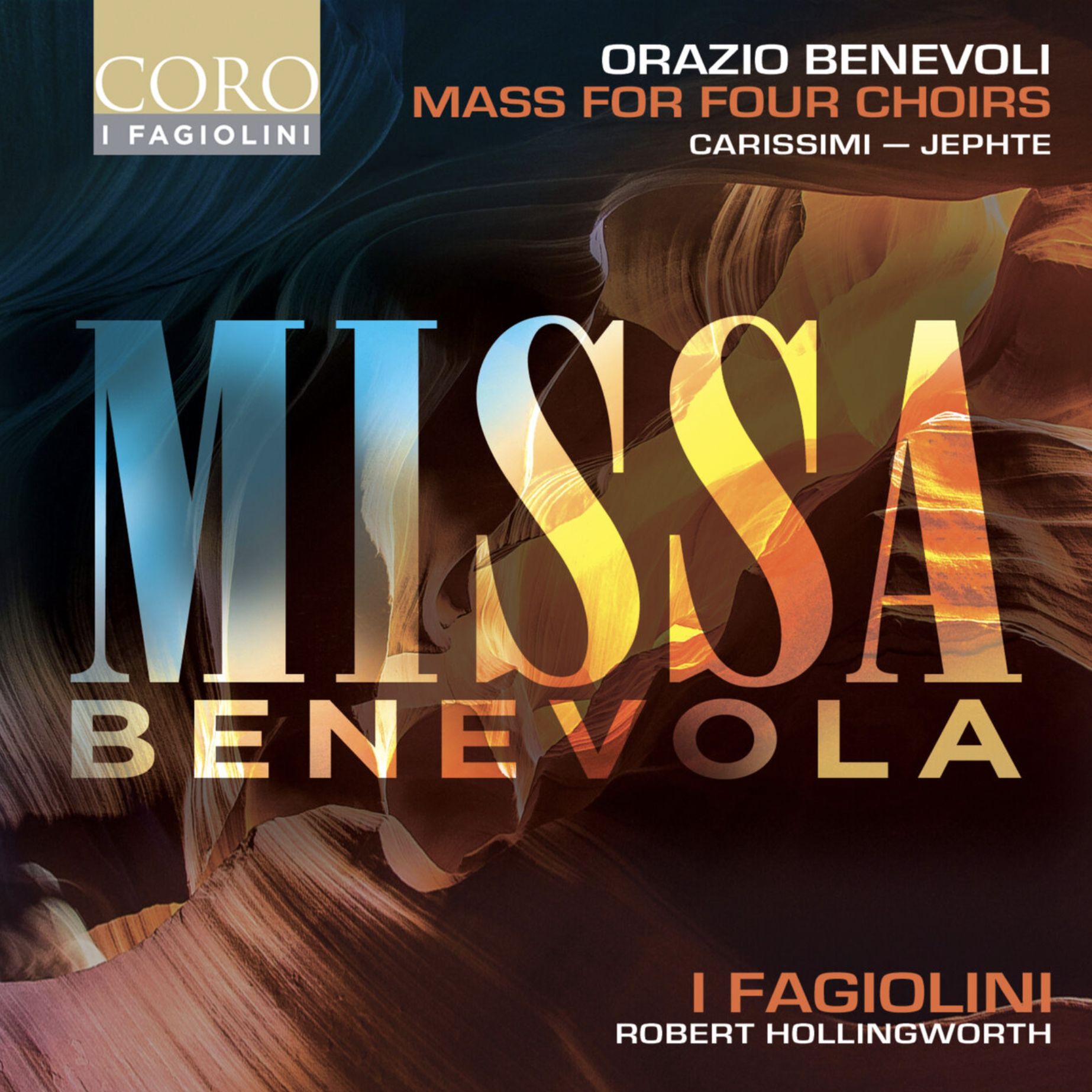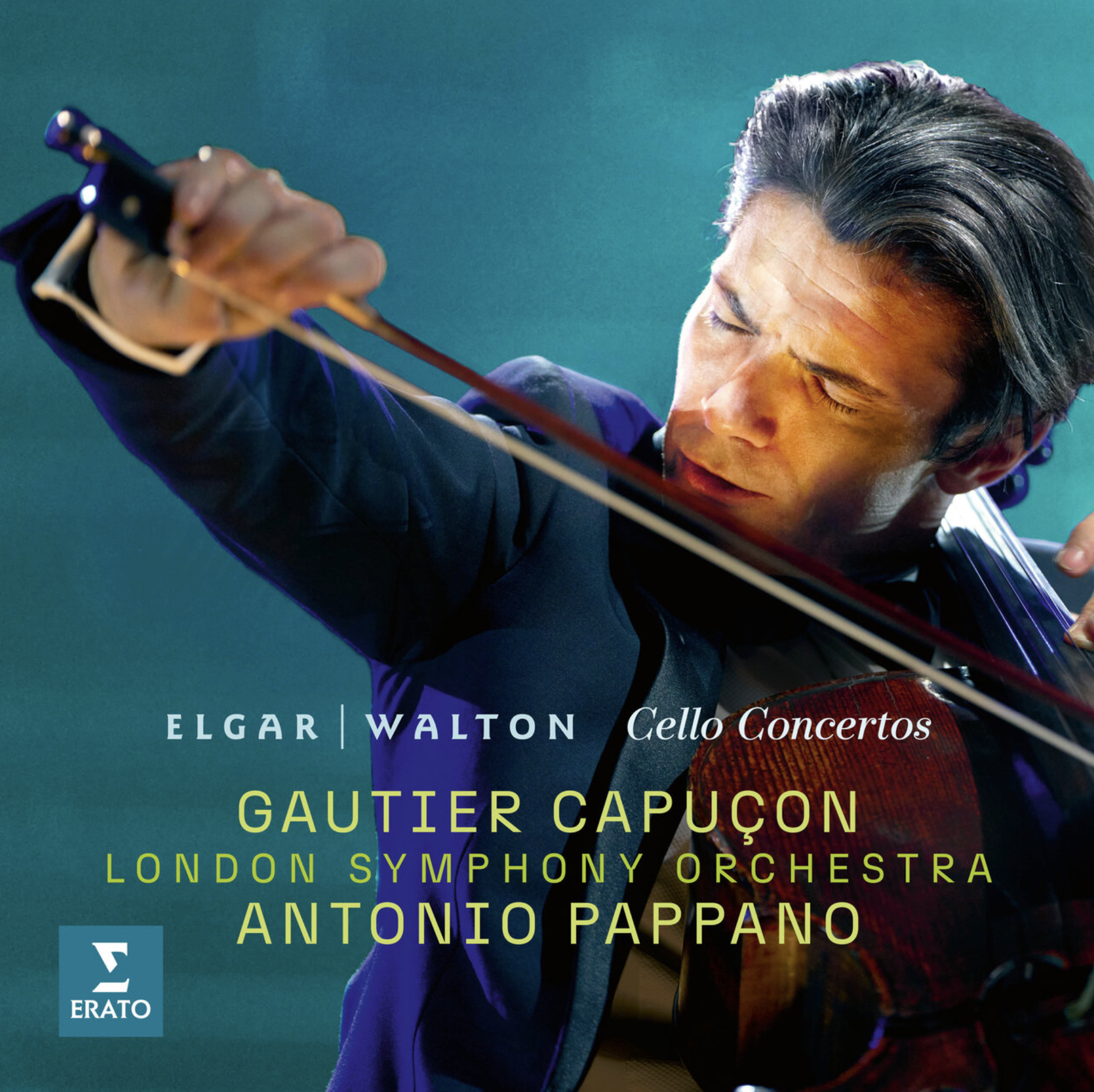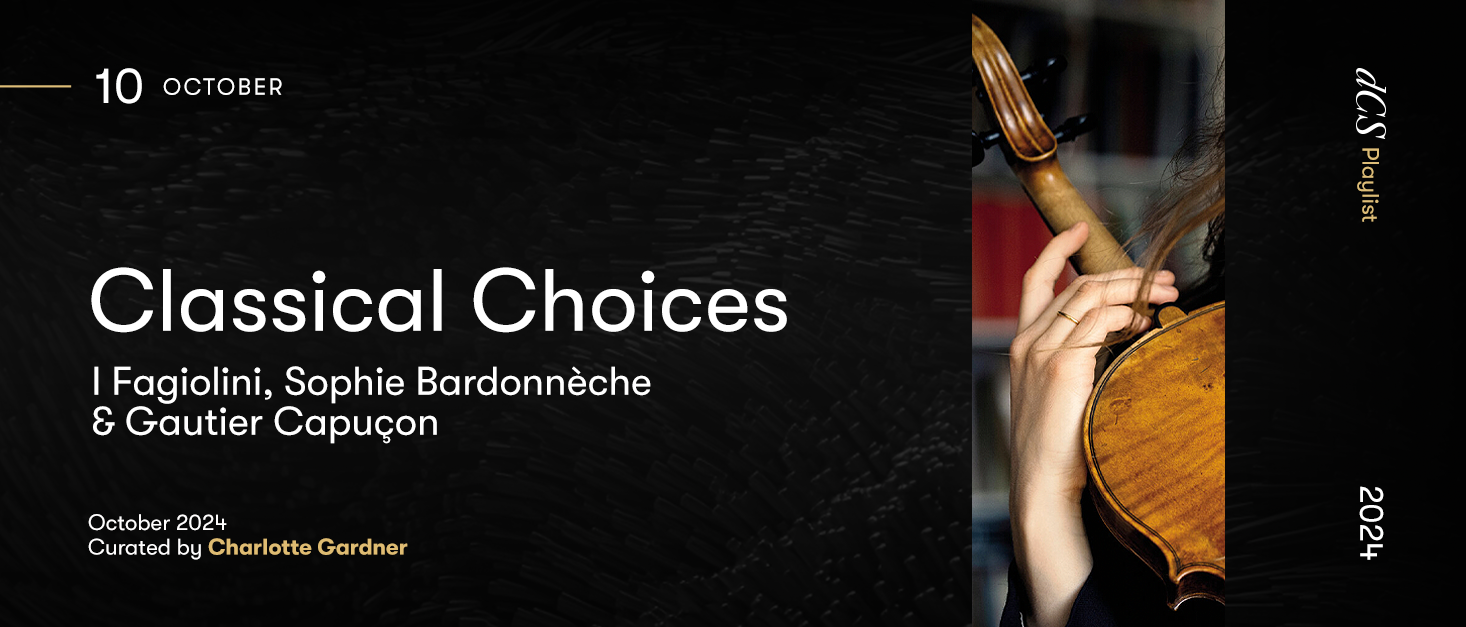Welcome to October’s Classical Choices. Our round-up of new classical releases includes the world-premiere recording of a forgotten master of polychoral masses in 17th century Rome, brought back to dazzling life by Robert Hollingworth and I Fagiolini; a fascinating programme of female composers of the French baroque from Le Consort founding-violinist Sophie Bardonnèche; and a pairing of two major British works, the Elgar and Walton cello concertos, from Gautier Capuçon with Sir Antonio Pappano and the London Symphony Orchestra.
This is prefaced with an album which was recently named Gramophone’s Recording of the Year for 2024. Hilary Hahn’s Ysaye Solo Violin Sonatas for Deutsche Grammophon have all the feel of readings that will become the go-to recordings of these groundbreaking works for some time to come – I’ve selected the Spanish-inspired Sonata No 6 for you here…

Orazio Benevoli: Missa Benevola
I Fagiolini, The City Musick/Hollingworth
Coro
Always up to something fascinating, British early music vocal ensemble I Fagiolini and its tireless director Robert Hollingworth are currently immersed in ‘Colossal Baroque’ – an exploration of the poly-choral masses of Orazio Benevoli, which has included the preparation of brand-new performing editions.
A crucial ‘lost’ figure of 17th century Italian music, and one of Rome’s leading post-Palestrina composers, Benevoli was maestro of the Cappella Giula. What makes his large scale masses – written for Rome’s most splendid occasions, with the various choirs positioned at points along the nave of a cathedral, each on a specially-built platform – especially interesting to modern choirs is that, while sonically they represent a kaleidoscopic feast, he achieves all his effects with each of his four choirs scored for the same simple, standard SATB layout (Soprano, Alto, Tenor, Bass) that we use today. This second of its accompanying albums gives pride of place to the premiere recording of the four-choir Missa Benevola, which offers as much for the instrumentalists of The City Musick to get their teeth into as it does the one-to-a-part singers of I Fagiolini themselves.
The constantly-shifting colour and movement leaping out from this long-forgotten score, performed as it is here with such radiant feeling and textural clarity, is of the kind that will stop you in your tracks. Make sure you listen out (not that you’re likely to miss it…) to the second Kyrie’s ‘mule’ technique, as in, ‘stubborn as’, where the sopranos of all four choirs sung a slowly changing melody as the lower parts sang busier lines underneath – an idea Handel may well have borrowed for the ‘King of Kings’ section of his ‘Hallelujah Chorus’ (Messiah) after visiting Rome. Slipped between the Mass sections are various pieces by Benevoli’s contemporary, Carissimi. I’ve given you the Mass as far as the Credo, with Carissimi’s ‘Paratum, cor meum’ slipped in before it.
Always up to something fascinating, British early music vocal ensemble I Fagiolini and its tireless director Robert Hollingworth are currently immersed in ‘Colossal Baroque’ – an exploration of the poly-choral masses of Orazio Benevoli, which has included the preparation of brand-new performing editions.
A crucial ‘lost’ figure of 17th century Italian music, and one of Rome’s leading post-Palestrina composers, Benevoli was maestro of the Cappella Giula. What makes his large scale masses – written for Rome’s most splendid occasions, with the various choirs positioned at points along the nave of a cathedral, each on a specially-built platform – especially interesting to modern choirs is that, while sonically they represent a kaleidoscopic feast, he achieves all his effects with each of his four choirs scored for the same simple, standard SATB layout (Soprano, Alto, Tenor, Bass) that we use today. This second of its accompanying albums gives pride of place to the premiere recording of the four-choir Missa Benevola, which offers as much for the instrumentalists of The City Musick to get their teeth into as it does the one-to-a-part singers of I Fagiolini themselves.
The constantly-shifting colour and movement leaping out from this long-forgotten score, performed as it is here with such radiant feeling and textural clarity, is of the kind that will stop you in your tracks. Make sure you listen out (not that you’re likely to miss it…) to the second Kyrie’s ‘mule’ technique, as in, ‘stubborn as’, where the sopranos of all four choirs sung a slowly changing melody as the lower parts sang busier lines underneath – an idea Handel may well have borrowed for the ‘King of Kings’ section of his ‘Hallelujah Chorus’ (Messiah) after visiting Rome. Slipped between the Mass sections are various pieces by Benevoli’s contemporary, Carissimi. I’ve given you the Mass as far as the Credo, with Carissimi’s ‘Paratum, cor meum’ slipped in before it.

Destinées
Sophie Bardonnèche, Lucile Boulanger, Justin Taylor
Alpha
One of the historically interesting aspects of the recent resurgence of interest in female composers is the revelation that, in centuries past, if you were a woman who wanted to write music, it seems France was the place to do it. That’s not to say it was easy for French female composers, but it does appear to have been easier. Hence all the 19th century music – good music – we’re now hearing by the likes of Cécile Chaminade, Mel Bonis, Louse Farrenc, Augusta Holmès, Rita Strohl and others. Yet it wasn’t just the 19th century French climate in which there was space for the odd female composer, as is eloquently made plain across Destinées, the first solo album from Le Consort co-founder and Les Arts Florissants baroque violinist, Sophie de Bardonnèche. The fruit of several years of concert-giving and research, it sees her joined by close musical colleagues including her Le Consort co-founder, harpsichordist Justin Taylor, and violist Lucile Boulanger.
Even before you’ve pressed ‘play’ on this one, its programme of sonatas, overtures and dances from ten different female baroque composers represents a treasure trove of social and musical history. Elisabeth Jacquet de la Guerre (1665-1729) is rightly a familiar name to many, and de Bardonnèche has done her proud, with three sonatas and a harpsichord prelude. Rather more forgotten, though, have been Mademoiselle Duval (c.1718-1775), the second woman to have a work presented at the Paris Opera and nicknamed ‘la Legende’ in her time, represented here by the proud Rondeau from her ballet, Les Genies. Also Anne-Madeleine Guesdon de Presles (1687-17..), whose gracefully expressive ‘Ariette dans le goût nouveau’ sits as the album-opener, and Elisabeth-Louise Pellecier (1720-1793), whose fierily virtuosic ‘Tempête’ follows – both women married to composers, with the latter signing her works with the name of her husband, Papavoine.
The performances themselves seal the deal, delivered as they are with such loving, deftly voiced, under-the-skin communion with the notes on the page. De Bardonnèche is her usual multi-nuanced, slenderly honey-toned, poetic self; and while this is her first ‘solo’ venture, what shines out is her collaborative spirit, because really this is her as first among equals in a chamber album, gorgeously performed, with all the closely-bound mutual awareness we’ve come to expect from the Le Consort crew.
As for other composers, I’ve found myself especially drawn to the music of Mademoiselle Laurant, the details of whose life appears to be now lost in the mists of time, but whose ‘delicacy in playing the harpsichord’ was noted by the gazette and literary magazine Le Mercure galant no less. The manuscript of a concerto of hers, played in 1690 ‘before Madame la Dauphine in the grand apartments of Versailles,’ is preserved at Versailles in the hand of composer and arranger André-Danican Philidor. For our playlist, I’ve given you an Air of Laurant’s, plus the aforementioned works by Guesdon de Presles, Papavoine, and Jacquet de la Guerre’s Sonata in D minor.

Elgar and Walton: Cello Concertos
Gautier Capuçon, London Symphony Orchestra/Pappano
Erato
Full disclosure, I’d been waiting and wanting Gautier Capuçon to record Elgar’s Cello Concerto for some years. It felt like such a natural match for his dark, powerful sound and all-in mode of emotional expression. Now he’s done so, and the result is very much worth the wait.
Capuçon describes coming to the Elgar concerto through Jacqueline du Pré’s famous recording of it with Barbirolli. It’s a rare cellist who doesn’t cite that legendary recording in connection with their own relationship with it, but where Capuçon differs is that you can genuinely hear a connection when you listen to his reading. Whilst his interpretation remains thoroughly his own, there's a similar power, passion and sense of not holding back emotionally. In essence, it is played in the same spirit as du Pré played, and thrillingly so.
Some listeners might find elements of his phrasing, or the number of portamenti (slides) almost too much at first. Trust me, you’ll acclimatise, and then fall head over heels, such is its complete emotional authenticity. Elgar wrote the concerto in the aftermath of the horrors of World War One, as his wife began her final illness, and as his music began to slip slightly out of fashion. This emotional world feels especially present in Capucon’s Adagio, voiced with breathtakingly long-lined legato control, and articulated with heartrending dignity.
The orchestra too is giving everything. The LSO gave the concerto’s 1919 premiere, then recorded it under Elgar’s baton with Beatrice Harrison, and you are really made to feel that this remains their music. This is incredibly exciting orchestral playing, combining technical brilliance with every bit as much emotional investment as Capuçon. I’m not sure I’ve ever heard a cello section in the final movement play with such rhythmic welly and power. The testosterone level is off the charts.
Most listeners will come to this album for the Elgar. But once there, this is likely to be a recording that also makes them fall in love with the Walton, itself composed in 1957. Here again, this is a reading over which you strongly feel its recording history translated into Capuçon’s own distinct voice. There is such a lot about his big, dark tone (accentuated by his 1701 Matteo Goffriller, but his pre-Goffriller recordings are a useful reminder that ultimately it’s him) that brings to mind that of the concerto’s dedicatee, Gregor Piatigorsky. Add a forwards-flowing glide feeling very reminiscent of Walton’s own recording of the work, conducting Pierre Fournier, and a ravishingly warm luminosity from the LSO, and one suspects that Walton would have been very happy indeed with this.
Truly, this is a magnificent album. It’s thoroughly painful to have to choose which concerto to put on the playlist. But I’ll go for the Walton, given that the chances of you not looking up the Elgar on your own are very slim indeed.


















